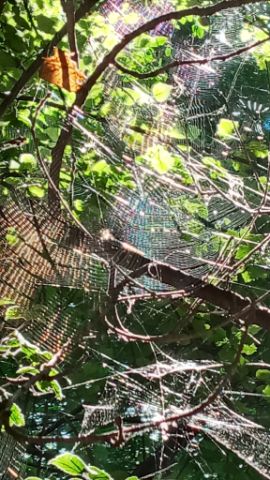

Marit Greenwood and her husband live in South Africa. She is an artist who is drawn to contemplative spirituality.

At one point in the online short course I took a while ago on Teresa of Ávila’s work The Interior Castle, lecturer James Finley offered the perspective that the whole of the spiritual journey of an individual has as its aim to “join God in knowing who I am, hidden with Christ in God,” to ground myself in awareness of my “God-given nature, invincibly precious in my fragility.”
Hidden with Christ in God. Paul’s words, floundering for language that will adequately convey the fullness of this to his listeners in Colossae who were inclined to get caught up instead in the visibility of the empire society in which they lived.
These rich perspectives returned to mind when I, like a moth circling a candle flame, returned to Origins Retreat Centre yet again. They came to the fore as I walked in the poplar grove, looking for a particular sculpture in the Stations of Life, a series of twelve visual stopping points highlighting pivotal events in Jesus’ incarnate life, hidden variously amongst the undergrowth and trunks of the poplars.
My search was arrested by a plate-sized spider web lying horizontally across my route, hindering my progress. It was the first web I had seen, although I had felt a number as I walked, the first human to enter the grove that morning.

I saw it because it was suddenly illuminated by the leaf-filtered morning sunlight. Shimmering. Unusually horizontal. Across the path, with its spider a translucent, sun-shot little being, delicately hanging upside down in the centre of its radiant web, its ”feet” connected to the web like an upside down ballerina perfectly en pointe, eight times over. An arachnid jewel!
And we learn from Paul through Colossians that “all the treasures of wisdom and knowledge“ are hidden within Christ. Jewels of a different sort. Hidden.
Within the space of a few breaths, the sunlight fell elsewhere, the web and its creator invisible to me again. Yet rationally I knew both were still there. An unlikely image of these words of Jesus: “I am in the Father and you in me and I in you.” Developed in Revelation through the image of the Slain Lamb being in the centre of the throne occupied by God, and the host of faithful witnesses crowding around the throne in a webbing of worship.
How frightfully humbling to me to have a spider as my teacher.
The lesson continued. I retreated and became aware of the undergrowth being peppered with webs, now visible, now not, depending on how the sunlight fell. Most resistant to being photographed effectively, their transparency (hiddenness?), too insubstantial.
Hidden in Christ – not really on display.
By the time I reached the station Incarnation, I could accept, rather than brush off, the trace of web on the face of the svelte Mary sculpture. And it seemed somehow fitting now that because of the interplay of light and shadow, I could at times not witness the intimacy of the gaze between baby Jesus and her.
The hiddenness of intimacy.
Fitting, too, that beyond her shoulder, an entire village of webs and occupants shone forth in early morning iridescence in the tangle of undergrowth there.
The whole scene, spiders and myself included, an encircling of sacred obscurity in the softlight poplar grove.